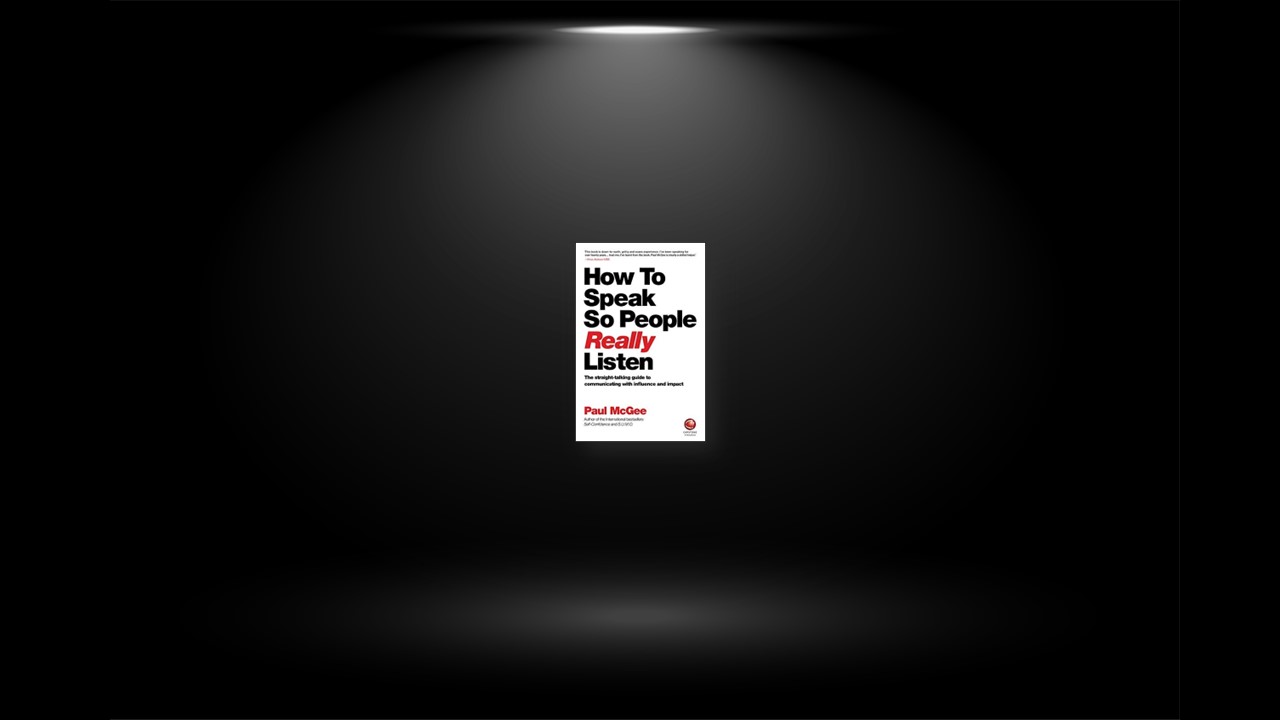SIN 1: A failure to make your message sticky or memorable
Having a great message is one thing. Getting it remembered is another entirely. Think about the ways you communicate your messages to others. Could your approach ever be described as boring or bland? Do you say things the way you’ve always said them? If not, great; but if you do, then perhaps it’s time to freshen up your style. Look for ideas to see how you can make your message more sticky and memorable – trust me, there’ll be loads. First, repetition – be prepared to repeat your message in different ways. Second, use less-familiar language – language that gets people’s attention and causes them to want to know more.
SIN 2: Drowning people in detail
There are occasions when our communication challenges are due to something being lost in translation. It happens. But here’s another reason. Sometimes our message is lost in information. In other words, we’ve communicated so much detail that it’s hard for people to grasp everything, never mind remember it. Drowning people in detail results in us overloading our audience’s brains. When that happens you’ve literally buried the treasure within your message in an ocean of content, and your key point is lost at sea. When this happens, people can feel mentally exhausted and a Mexican wave of yawning can quickly spread across the room.
SIN 3: A failure to consider or understand your audience’s needs
The problem? We focus so much on what we’re going to say that we forget to focus on who we’re saying it to. You see, it’s possible to deliver a great talk in a great way – but to the wrong audience. If you’re going to make an impact it has to be relevant. Here’s the deal: If you don’t tailor your message, you’ll fail with your message.
Not knowing where your audience is at and what their needs are is like throwing a fire extinguisher to a drowning man and hoping it will help. Now, clearly it’s vitally important to consider what you’re going to say, but equally important remember you’re speaking to people, not into a vacuum. So, the more you can discover about your audience in terms of their needs, their priorities and their concerns, the more you are able to tailor your message to them.
SIN 4: Focusing on features rather than selling benefits
Whether you like it or not, we’re all in sales. For some of you that’s an obvious statement to make. For others, perhaps less so. However, there will be times when we have to sell ourselves and our ideas to other people. Think about it – on a day-to-day basis you’re probably having to influence people that can range from your customers and colleagues, right through to your friends and family. (And if you have children, you’ll know how much you need to influence and persuade them – although you may more commonly refer to it as begging and bribery.)
But because we often don’t see ourselves as selling a message, we fall into the trap of focusing on the features rather than the benefits of what we’re saying. Imagine that when you’re speaking your audience is holding a sign which simply says this: ‘WHY SHOULD I CARE?’
SIN 5: Winging it
The sin of ‘winging it’ is rarely, if ever, committed by nervous people who are inexperienced in speaking and who are suffering from a heavy dose of self-doubt. No. Winging it is far more likely to be a mistake made by relatively experienced and generally confident people.
The enemy of excellence is not mediocrity. The enemy of excellence is being fairly good. if you consider yourself to be just mediocre (i.e. average at best) when speaking to others, then there’s clearly room for improvement. But if you’re fairly good at speaking (i.e. above average, certainly in comparison with other people you know), then the temptation is to ask: why work at getting even better?’ Why bother with any more preparation or planning? You’re fairly good. And I’m not suggesting you aren’t. But that’s the problem. When that’s the case you’re less likely to take the small but important steps to move from being ‘fairly good’ to excellent.
WAY 1: Get real
Start by remembering you’re communicating with human beings and not, as some organizations call them, human resources. If you stopped using the phrases ‘giving a speech’ or ‘delivering a presentation’ and replaced them with ‘I’m having a conversation’ or ‘I’m telling a story’, then you’d immediately appear more real.
Remember: You’re trying to develop a relationship with your audience when you communicate with them. When you view your presentation as a conversation it creates a different tone to your delivery. And guess what? You’ll appear more real and less wooden as a result. And here’s another crucial point. It’s difficult to buy in to your message if people don’t first buy in to you. So your goal is not to simply have a conversation, but to also create a connection.
WAY 2: Get your attitude into gear
Whose opinions and thoughts do you tend to listen to most? Whose advice do you ultimately act upon? In a nutshell: your own. The conversations we have with ourselves can have a profound effect upon us. These internal conversations or thoughts can determine whether or not we even take the opportunity to speak to others. Seriously, that’s how important and influential they are.
For instance, if your internal conversation goes something like this: ‘I hate giving presentations, I get so nervous’ or ‘What’s so good about me that I want to stand up and speak? – then you’re struggling before you’ve even started. It’s like an athlete being disqualified for making a false start – we can disqualify ourselves through our internal self-talk. But the flipside is also true. We can put ourselves in a far better position to achieve success if our attitude and mindset are right. Obvious? Absolutely. But not something we always pay attention to before we speak
WAY 3: Start at the end
Imagine you’ve been asked to give a presentation at work, or make a pitch to a client, or present at a job interview. What’s the first question most people ask themselves? In my experience it’s usually this: ‘What am I going to say?’ Seems a fair question, doesn’t it? But wait. Do yourself a favour. Don’t start there. Here’s what you need to ask yourself. ‘What’s the purpose and the point of what I’m going to say?’ Or to put it another way: ‘What am I aiming to have achieved by the time I’ve shut up?’
if you’re not clear on the point of your communication, it’s the equivalent of standing blindfolded in a boxing ring, throwing your arms about in the vain hope you might hit your opponent. If you’re not sure of the target you’re aiming for, then almost everything you say will miss the mark – unless you’re really lucky. The reality is: When you’re clear on where you’re going, you’re far more likely to get there.
If you want to speak so people really listen, you’re far more likely to succeed if the audience understands how the journey you’re taking them on will help them. But they’re unlikely to be a willing travelling companion if they’re asking themselves: ‘So what’s the point of what I’m hearing?’
WAY 4: Become an artist
Briefly close your eyes and for three or four seconds think of ‘breakfast’. What images come into your mind? Bacon sandwiches? A bowl of cornflakes? Muesli? Sausage and egg? Deep fried Mars Bar with curry sauce and chips? Be honest, did you think solely about the word ‘breakfast’ and see it written in black on a white background?
People think in pictures. when it comes to our five human senses (the others being hearing, taste, touch and smell), sight is the dominant one in relation to the speed with which we receive and process information. So when it comes to how you communicate with others, how intentional are you in creating pictures in people’s minds?
Think back to the First Great Sin of Speaking we explored earlier, ‘A failure to make your message sticky or memorable’. Could one of the main reasons for this be the lack of images we use to engage our audience when communicating with them? Well, here’s the good news. You’re about to discover some simple and practical ways to become an artist and paint pictures in people’s minds … and you won’t even need a paintbrush to do so. 1. Slides 2. Props 3. Use visual language 4. Illustrate your point 5. Turn figures into pictures.
WAY 5: Shine at question time
When Tony Blair reflected back on his time as Prime Minister of Britain, he recalled how much he struggled with Prime Minister’s Question Time. He considered one of his triumphs as PM to be seeing it go from a twice weekly affair down to just once a week. In his autobiography he describes the anxiety he felt in preparing for Question Time and the relief he felt when it was over. There’s one reason above all why Tony Blair and countless other politicians and presenters dislike questions. Control. You have far less control over how this part of your presentation or talk will unfold.
A difficult or unexpected question could be lurking around the corner, and how well it’s handled could determine how well your overall message is received. If handled well, your answer could help further your argument, reinforce your message, and confirm your credibility. However, if dealt with badly, all your previous hard work could be unravelled in a matter of moments.
Now, unless you have the control of a political dictator you don’t really have any guarantees as to how question time will go. That’s the bad news. The good news, however, is that with some planning and preparation you can greatly increase your chances of this being a positive and less stressful experience. Here’s a reminder. Communicate when questions can be asked. State how long you have for questions. Anticipate tough questions. Be honest. Be prepared when there are no questions.


